Among the pieces that the Museo Vivanco de la Cultura del Vino has in its collection is a drawing on acetate, beautifully hand-coloured and airbrushed, depicting a caricature of Bacchus, drunk and riding a small unicorn accompanied by a faun. The drawing (29.7 x 42 cm.) can be seen on public display in the museum space in Briones (La Rioja), surrounded by other interesting works of art from different periods and styles.
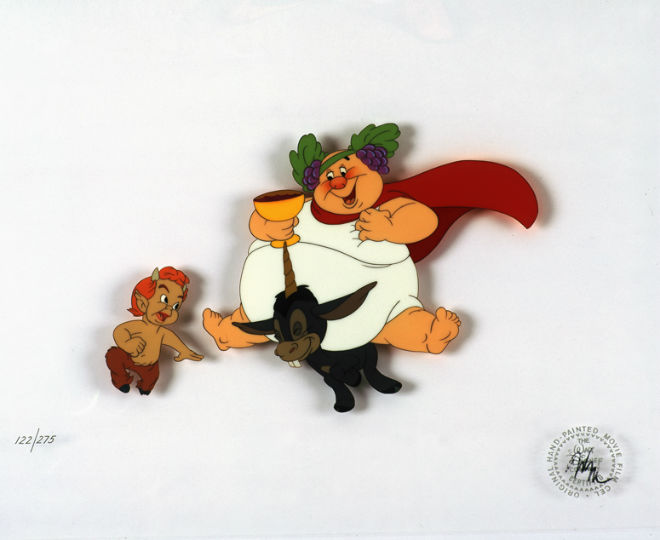 Bacchus, donkey and faun. Drawing on acetate. 1940. Museum Vivanco of Wine Culture
Bacchus, donkey and faun. Drawing on acetate. 1940. Museum Vivanco of Wine Culture
Specifically, it is an exact replica, made by the Walt Disney Company with related materials, of one of the original film cells that made up scene 24 of sequence 4.3 of the short film dedicated to Beethoven's Pastoral from the film Fantasia. This well-known feature film undoubtedly represents one of the milestones in the history of animated film and marked a momentous change in the relationship between art, music and film. Fantasia premiered on 13 November 1940, at the Colony Theatre in New York. In it, Mickey Mouse, for many the alter ego of Disney himself, stars in The Sorcerer's Apprentice, perhaps the most famous short of the entire film.
In 1940 Walt Disney was 39 years old and was making a name for himself as a great innovator in the field of animation. Within a year, the United States would enter the Second World War and, after its tragic conclusion, would become a world power of reference politically, economically and militarily for the rest of the 20th century. Its cultural system would for many decades represent an unsurpassed model. The pharaonic production of its film industry would have a fundamental influence in shaping the collective imagination of several generations.
Perhaps not everyone knows that Walter Elias Disney (19011-1966) was the person whose films received the most Oscars since the Academy of Motion Picture Arts and Sciences awarded its first prize in 1929. Over the course of his stellar career as a film producer, Disney won a total of 26 statuettes (out of 59 nominations), four of them honorary.
One of his most awarded films was Fantasia, which in 1941 received two Oscars: one to Walt Disney, William Garity, John Hawkins and the RCA company for the use of sound, and another to the master Leopold Stokowski (1882-1977) for the music. At the same ceremony, Disney was also presented with the Irving Thalberg Memorial Award, which has been awarded since 1937 to particularly significant figures in the world of film production.
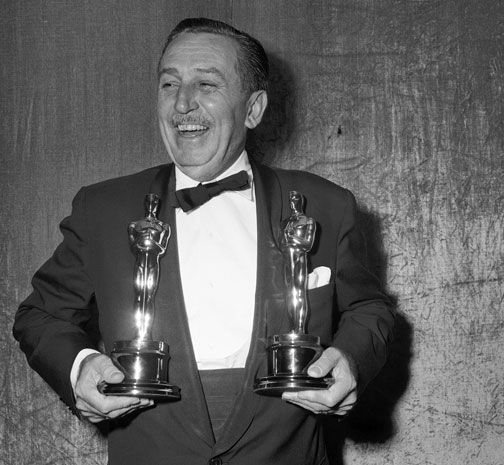 Walt Disney holding the two Oscars for Fantasia: award for use of sound and music. Author: d23.com
Walt Disney holding the two Oscars for Fantasia: award for use of sound and music. Author: d23.com
Presented in cinemas under the slogan "music you can see and images you can hear", Fantasia was Disney's most experimental project ever. The avant-garde spirit of the film aimed to unite images and music in an unprecedented way, offering the viewer a total synaesthetic experience. Instead of simply being accompanied by a soundtrack, the cartoons were conceived and produced specifically to be combined with compositions by some of the most famous musicians, such as Bach, Beethoven, Stravinsky, Mussorgsky, Tchaikovsky and others.
Despite the accolades it received for its technical and artistic value, Fantasia was at the time an absolute fiasco from a commercial point of view. And especially in comparison with the huge public success that Snow White and the Seven Dwarfs (1937), Disney's first animated feature film, had achieved only three years earlier. The financial failure of Fantasia forced the American producer to abandon experimental cinema, focusing his production on films aimed at a general audience and in particular at the younger segments of the population.
However, as is sometimes the case with works that are ahead of their time, two decades later Fantasia was given a second life and achieved full global acclaim. Much had changed in the world in the 1960s. It was the time of the economic boom and the West was in the midst of a radical transformation of cultural and artistic canons. American films were conquering the European film markets. The avant-garde restlessness and formal experimentations of Fantasia, which had left the audiences of the 1940s cold and distant, were now in tune with modern times and their new aesthetic and narrative codes. These were the Sixties: the years of the revolution in moral, social and cultural habits; of psychedelia; of Pop Art; of the Beatles and of the contamination between High Culture and Low Culture. Fantasia was then looked at with different eyes and with an expanded level of consciousness, so to speak. Disney's intention to build a bridge between different artistic manifestations (music, drawing, moving images etc.), through a new synergistic model of cinema, now appeared less cryptic. From the late 1960s onwards, Fantasia thus became one of the best-known animated films (and not only) of the 20th century.
 Leopold Stokowski, also awarded an Oscar for Best Music in Fantasy. Author: werecyclemovies.com
Leopold Stokowski, also awarded an Oscar for Best Music in Fantasy. Author: werecyclemovies.com
One of the short films is dedicated to Beethoven's Sixth Symphony (Pastoral) and represents a day in the life of the gods of Olympus. Mythological beings and Greek divinities, such as Zeus or Bacchus, dance and interact accompanied by music. Here the god of wine appears under the intoxicating effects of his favourite drink during a celebration in his honour. The significant presence of wine in this mythical film has not gone unnoticed by Vivanco, whose interest in showing its timeless value as a cultural, historical and anthropological element is the basis of the documentation and compilation work that it has been carrying out for more than ten years through its Foundation.
Beethoven's Sixth Symphony -Pastoral-. Legendary creatures and characters from classical mythology.
For this reason, the Museum decided to include the drawing we mentioned at the beginning of this article in its collection. If you are passionate about cinema and drawing, you can't miss this jewel, part of one of the most important animated films (and not only) in the world.








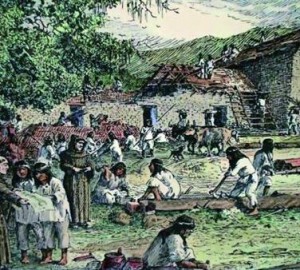
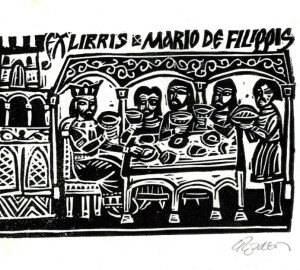
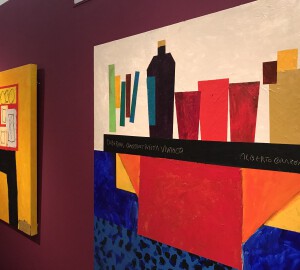







2 comments